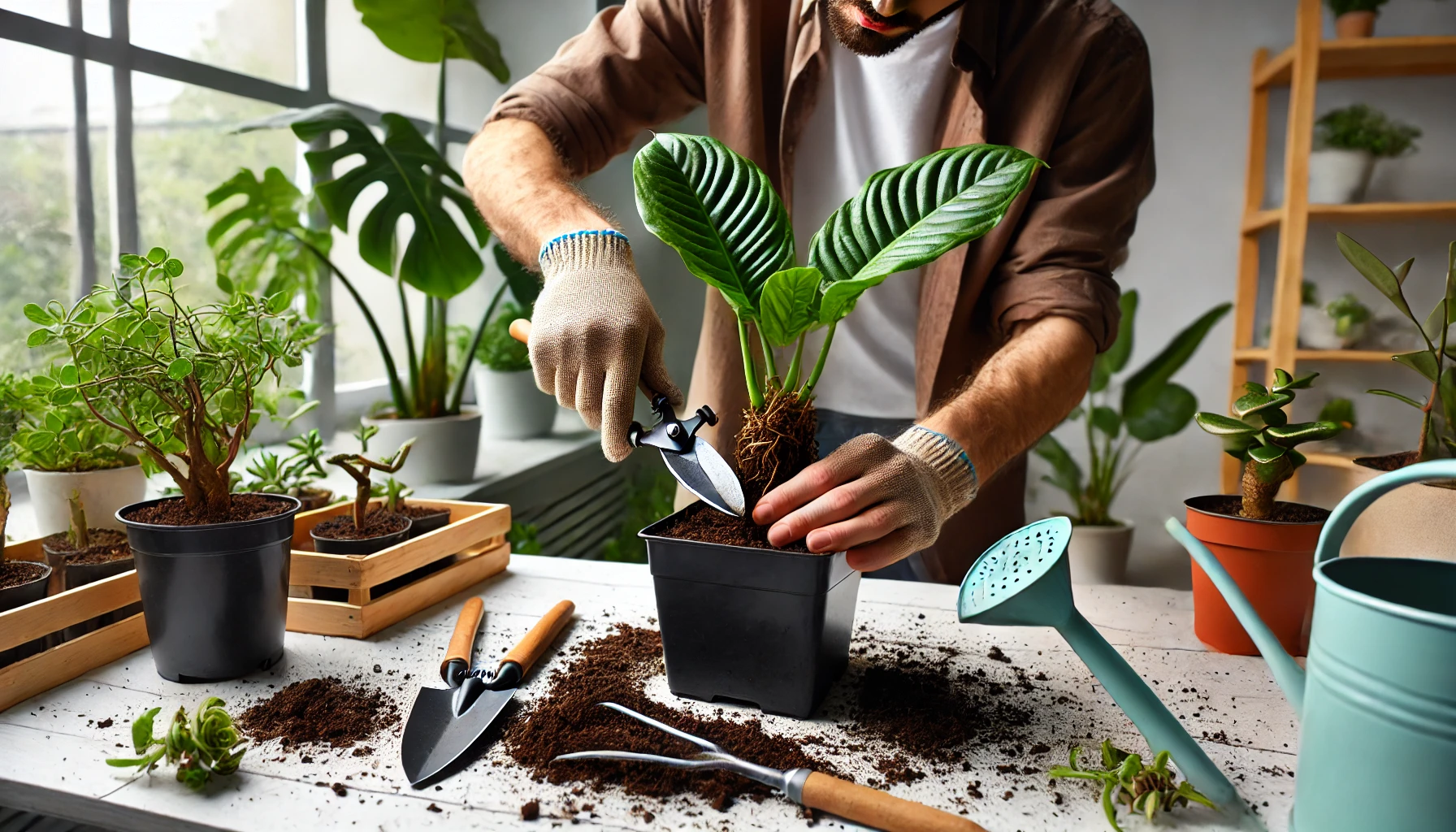A wilting or struggling plant doesn’t always mean it’s beyond saving. With the right approach, you can identify the problem and take steps to bring your plant back to life. This guide will help you diagnose issues and apply the best recovery methods.
1. Identify the Problem
1. Overwatering (Root Rot)
- Signs: Yellowing leaves, soft stems, and a foul smell from the soil.
- Solution:
- Stop watering and let the soil dry out.
- Remove the plant from its pot and trim off any mushy, blackened roots.
- Repot in dry, well-draining soil and a container with drainage holes.
2. Underwatering
- Signs: Dry, crispy leaves and drooping stems.
- Solution:
- Water the plant slowly and deeply to rehydrate the roots.
- Mist leaves lightly if they appear shriveled.
- Maintain a regular watering schedule.
3. Lack of Light
- Signs: Leggy growth, small leaves, and pale coloration.
- Solution:
- Move the plant closer to a bright, indirect light source.
- Rotate it weekly for even light exposure.
- Consider using grow lights for low-light environments.
4. Too Much Sunlight (Leaf Burn)
- Signs: Brown, scorched patches on leaves.
- Solution:
- Move the plant to a shadier spot or filter direct sunlight with sheer curtains.
- Trim off damaged leaves to encourage new growth.
5. Nutrient Deficiency
- Signs: Yellowing leaves, slow growth, or weak stems.
- Solution:
- Feed with an organic fertilizer suited to the plant’s needs.
- Use compost or diluted liquid fertilizer for a nutrient boost.
6. Pest Infestation
- Signs: Holes in leaves, sticky residue, or tiny bugs on stems.
- Solution:
- Wash leaves with mild soapy water or apply neem oil.
- Remove heavily infested leaves.
- Inspect plants regularly for early signs of pests.
7. Soil Issues
- Signs: Compacted or moldy soil preventing root growth.
- Solution:
- Repot with fresh soil if it smells bad or is too compacted.
- Use aerated, well-draining soil to improve root health.
2. Step-by-Step Recovery Plan
- Remove dead leaves and stems to redirect energy to healthy growth.
- Check and adjust watering based on soil moisture.
- Move to an ideal light condition (brighter or shadier as needed).
- Provide proper nutrients with compost or organic fertilizer.
- Treat for pests if necessary with neem oil or insecticidal soap.
- Be patient—some plants take weeks to show signs of recovery.
3. Prevention Tips to Keep Plants Healthy
- Water wisely – Always check soil moisture before watering.
- Use well-draining pots – Prevents root rot and excess moisture buildup.
- Monitor for pests – Catch infestations early.
- Rotate plants for even light exposure – Avoid leggy growth.
Even a dying plant can often be saved with proper care and patience. By identifying issues early and applying the right solutions, you can bring your plants back to life and keep them thriving.

